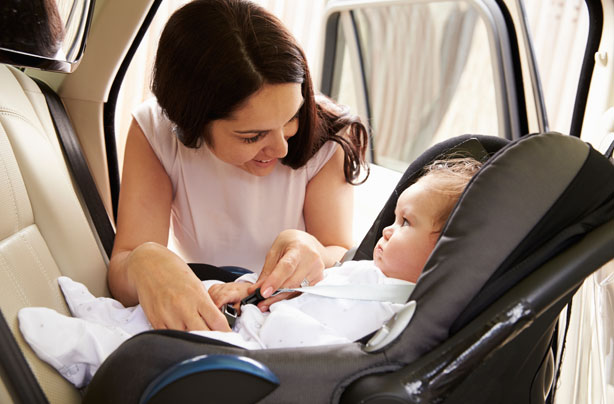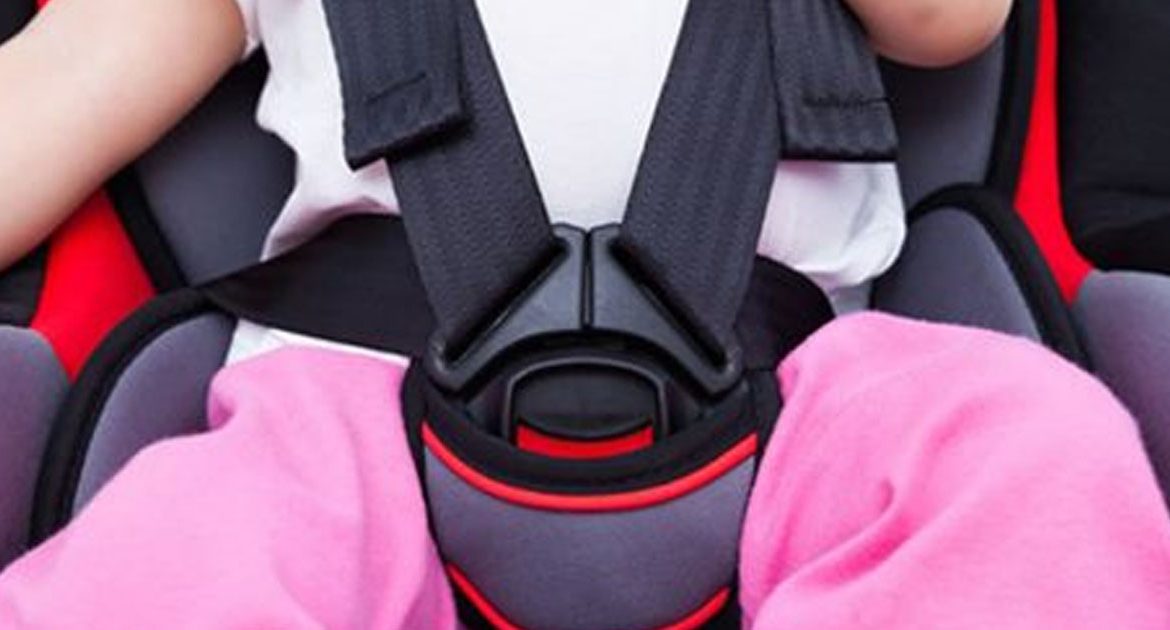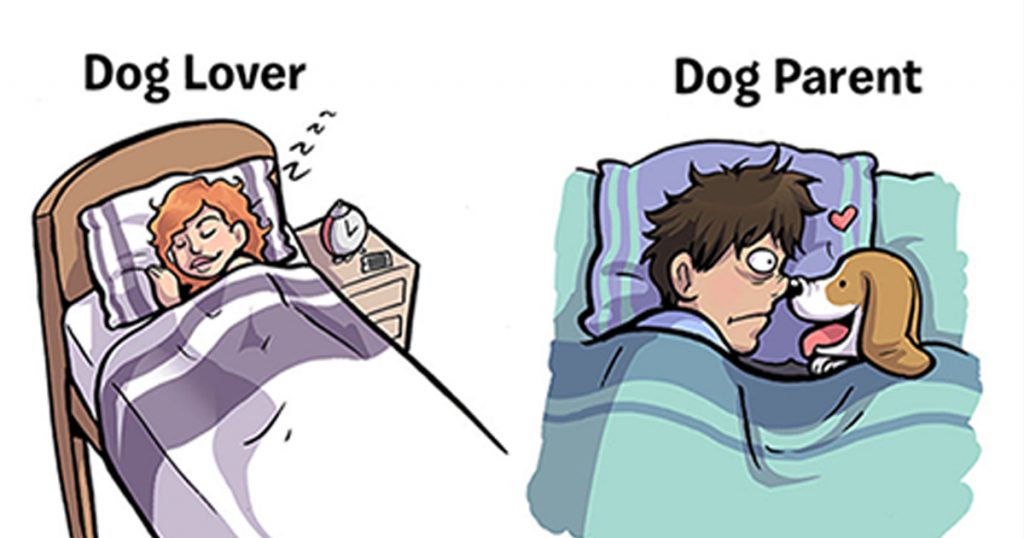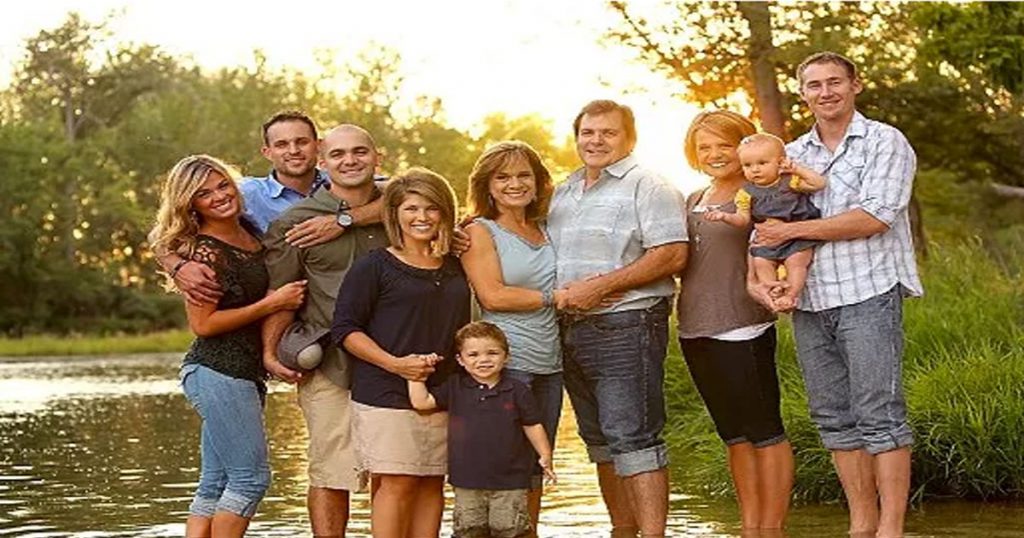Buying, fitting or replacing a car seat can be a confusing experience for any parent. Here, we collate all of the information you need to make the safest choice for you and your child.
Car seat manufacturer Britax has found that 49% of seat belts used to secure child seats may be fitted incorrectly. These are their top tips for ensuring that you are using the correct car seat, and fitting it safely.
Choose the correct seat
Identify which seats will ‘fit’ your child and your car — in the UK, this is based on the age and weight of your child, and should be determined using the official government guidelines.
Check your car’s compatibility
Once you’ve worked this out, you need to check the car seat’s compatibility with the cars it’ll be used in. You will see that you have a wide range choice of car seats; some are ‘group-specific’ (i.e. designed exactly around the physiology of children of specific weight and size and some are called ‘combination seats’, which are designed to cover a much wider weight and age range).
While the group-specific car seats offer tailored protection along with the ultimate comfort and fit, the combination seats offer maximum flexibility and longevity. Only you can decide what is best for your family and lifestyle, as long as the car seat fits your child and your car.
Know when to change seats
It’s also important to know when to move your child to the next seat. Here are some key points to look out for:
You should move from a Group 0+ infant carrier when your child exceeds the weight limit, or if their head is higher than the top of the infant carrier.
Move from a Group 0+/1, or 1 seat when the upper edge of the shell is roughly at eye level of the child or your child exceeds the weight limit.
Do not move to a Group 2/3 seat too early because these seats are wider to accommodate larger children. A younger child’s shoulders are too narrow to hold the adult seat belt securely and can therefore easily slip out from under the belt, especially when they fall asleep during the journey.
Keep babies and younger children rear facing
Rear facing car seats were previously only available for very young children, but with wider availability in all sizes now and increased safety benefits a rear facing seat is thought to be the best option, even for children up to five years of age. In many European countries rear facing car seats have been mandatory for children up to four years old and it’s reported that death and injury rates have plummeted as a result.
For safety reasons, you should keep your child in each stage car seat until they reach the weight limit or their head reaches the top of the seat. This is especially important for babies as rearward facing seats offer the safest way of travelling. In July 2013 a new regulation was put into place (ECE R129); this regulation includes mandatory rearward facing until a minimum of 15 months of age, and this is proven to be the safest way to travel for young children in the unexpected event of a frontal collision.
In a collision children in a front facing car seat would be pushed forward, out of their seat, whereas children facing backwards would be pulled into their seat, where they would be more protected. This is important because babies and young children have undeveloped neck muscles, and need increased support. When considered buying a car seat look at rear facing options for older children too, not just babies — to give the best possible protection against injury.

Be booster-seat aware
Children must be in a car seat until they are 135cms tall or 12 years old — whichever comes first! At present, from 15kg (around the age of four), children can be moved to a booster seat used with an adult seat belt.
However, new guidelines, that came into effect in March 2017, state that backless booster seats will only be approved for use for children taller than 125cm and weighing more than 22kg.
Manufacturers will now also only make booster cushions approved as group 3.
Consumer experts Which? explain, ‘The new additions to the child car seats regulations will only apply to any new products appearing on the market. So parents looking to buy a booster seat next year should start to see that they’re not approved for use with children under 125cm and 22kg.’
This means that parents who have a booster seat now will still technically be able to use them without breaking the rules, but you should note that many experts do not approve of backless seats or booster cushions under any circumstances.
Britax do not sell booster cushions as they offer no side impact protection should one of the most severe types of collisions on the roads occur (as this video demonstrates), and they only recommend highback booster seats which offer deep protective side wings and head support.
Which? child car seat expert, Lisa Galliers agrees, ‘A decent high-backed booster seat provides better protection in a front crash, as they’re designed to guide the adult seat-belt across the child’s body properly, and our crash tests prove they offer much more protection in a side-impact crash that a backless booster seat alone.’
Confirm safety standards
When you’re buying an infant carrier or car seat, you will see either the ECE R44/04 approval or the ECE R129 approval label, both of which are current approval standards for children’s car seats in Europe.
Get an expert fit
Although car seat installations are very similar, they are not exactly the same. That’s why there is a separate installation manual for each car seat in the market, because there are small nuances in installation and usage.
When you purchase a new car seat, it’s highly recommended that you take your car to the store and have the seat demonstrated by an in-store specialist who will also fit it into your car for you. Make sure the seat is the right one for the weight, height and age of your child, and do check your child’s comfort too!
The best car seat is the one that fits both your child and car. Explore Britax’s FitFinder for the most comprehensive check to see if your chosen Britax car seat is compatible with your vehicle.
Car seat safety law
Children under three years-old
All children under three must be in a car seat in the front and rear of the car and it’s the driver’s responsibility to make sure this happens.
It’s illegal for a child to travel in the front seat in a rear-facing car seat if the car has airbags.
Children between three and 12 years old (or when they have reached 135cm tall)
All children between three and 12 years old must use an appropriate car or booster seat in the front and rear of the car.






